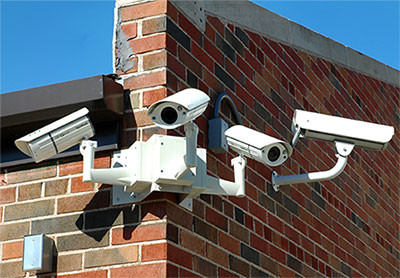 Security is a top priority in schools throughout the country, and the capabilities of IP video surveillance systems make them one of the most popular and effective security tools available. IP video is advantageous in a number of ways including: superior image quality, ease of manipulation, integration capabilities, simple accessibility and a wide scalability range. IP video systems also allow cameras to be deployed anywhere within reach of a network connection, while a standards-based design and open architecture ensure the ability to incorporate signals from various types and brands of cameras into a unified video platform.
Security is a top priority in schools throughout the country, and the capabilities of IP video surveillance systems make them one of the most popular and effective security tools available. IP video is advantageous in a number of ways including: superior image quality, ease of manipulation, integration capabilities, simple accessibility and a wide scalability range. IP video systems also allow cameras to be deployed anywhere within reach of a network connection, while a standards-based design and open architecture ensure the ability to incorporate signals from various types and brands of cameras into a unified video platform.
Video management software (VMS) systems are a central component of IP surveillance that maximize the ability of video cameras located throughout a school campus to keep students, staff, visitors and facilities safe. Combined with an event-management platform, VMS systems easily integrate with an array of physical security solutions to provide security professionals the information needed to safeguard their campus and make better, more informed decisions.
VMS technology. IP-based solutions open the door for linking systems and areas, allowing an entire campus to be tied to the VMS platform for improved situational awareness. An open platform conforming to industry standards enables schools to choose best-of-breed components, combined in any configuration for any size application.
Ideally, VMS technology should be intuitive and relatively simple to configure as well as readily able to integrate with network-based systems. From an operations standpoint, authorized users should be able to view and control the system from anywhere on the network through a highly-intuitive, unified-user interface. Optimized by touch-screen operation, the interface would provide instantaneous control of all aspects of video detection, analysis, delivery and response.
Interoperability and connectivity. With local municipal authorities running identical VMS systems, this makes vital information immediately available to those officials for collaborative handling in the event of a fire, lockdown or other serious threats at a school. This enables schools to react to events, and potential problems, quickly and effectively which in turn can prevent them from escalating.
A full complement of video surveillance cameras with a VMS can provide situational awareness, even when the control room is not fully staffed and able to monitor events. VMS system capabilities can also be used for real-time and after-the-fact investigation. Tools, such as digital PTZ into recorded images, time slicing and bi-directional playback with variable speed and instant access to video, offer faster access to data.
New VMS technology. Standard definition and HD/megapixel cameras are able to stream high-resolution video over a low-speed connection or limited bandwidth network. Video streams through the cloud can be monitored at full frame rates (with less than one-second lag) including the ability to digitally control pan/tilt/zoom functions. Streams can then be encrypted to enable a secure connection both inside and outside of a school network, with all the resulting collaborative and safety advantages.
Mobile security as an element of VMS. Operational efficiencies that would be almost impossible for a non-managed (mobile) system to achieve are ensured. With the advent of High Definition Interactive Streaming (HDIS) Technology, streaming of multiple SD and HD cameras simultaneously to mobile devices, all at full frame rate (30 FPS) and over limited bandwidths is enabled.
More specifically, HDIS technology enables full motion playback of up to 16 HD video streams of live or recorded video at their original frame rate with full digital PTZ control of each camera. This technology allows remote users to access multiple HD images in real time.
Discipline management and monitoring. In addition to keeping students and staff safe, cameras can help administrators manage discipline problems or monitor facility levels and capabilities. Video can help to manage the flow of students, analyze bottlenecks that form between classes or view vehicle traffic flow. Video can also track facility occupancy, especially during the weekend or off-hours.
Video capability is also an excellent resource for facility management because it enables operators to view and evaluate a physical plant system malfunction before deciding whether to send a technician. Integrated with the HVAC system, video could help save energy costs by automatically turning up the air conditioner only when a room is occupied. And, when mobile security is implemented, individuals in the field can use their smart phones to send video images of a dangerous situation, such as a sewer without a grate, to authorities.
In today’s education environment, developing VMS best practices not only optimizes state-of-the-art, imaging technology, it enables the central management of complex systems and allows users to have an entire facility at their fingertips.